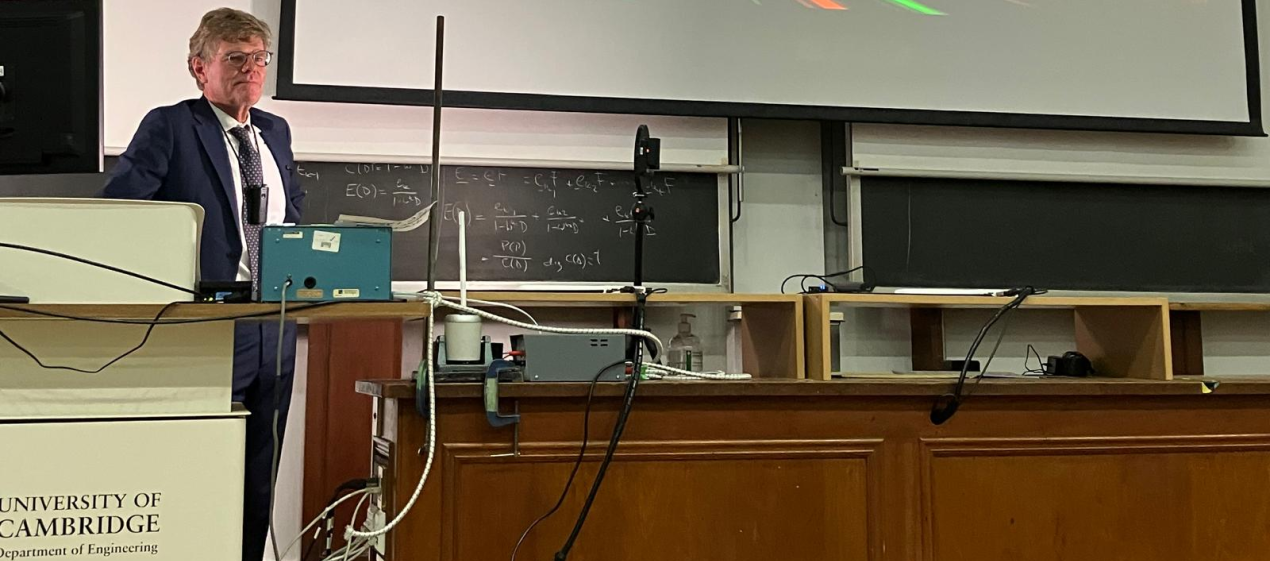Italian engineering excellence takes centre stage in Cambridge
From Italy’s metropolitan rail network to the challenges in the South
On 8 October 2025, Andrea Pigorini, Head of Infrastructure Engineering at Italferr, and President of the International Tunnelling and Underground Space Association (ITA-AITES), delivered the CSIC Distinguished Lecture 2025 at the prestigious Cambridge Centre for Smart Infrastructure and Construction (CSIC), at the University of Cambridge, an annual event that hosts leading international figures in the field of engineering and infrastructure innovation.
The lecture, with the title “Italian High-Speed Rail: Experience and Data from 1,000 km through Bologna, Florence and the Apennines – Shaping the next 1,000 km towards southern Italy”, illustrated the experience built up by Italferr in the design and construction of the Italian high-speed rail network, along the main Turin-Salerno axis between 1990 and 2010, with the Florence-Rome section completed in the early 1990s.
The high-speed network over 1,000 km long, often referred to as Italy’s “metropolitan rail network”, have revolutionised the country’s transport system by significantly cutting travel times between major cities and changing the way millions of passengers travel.
Besides providing key information about high-speed rail transport around the world, the presentation illustrated the evolution of the design, technological, construction and safety approach in the field of underground infrastructure, before moving on to examine the geotechnical and structural monitoring data collected both during construction and operation, providing important insights into the effects of the tunnelling techniques and structural solutions adopted.
There was a special focus on the challenging design decisions taken in relation to the complex and extensive urban tunnelling projects at the Bologna and Florence hubs, and through the Apennines on the Naples-Bari section, where underground works account for over 50% of the total.
Finally, the lecture explored the influence of European railway safety regulations on design decisions, outlining the criteria currently guiding the design of the high-speed network extension to the southern regions of Italy, which require long twin-bore tunnelling projects, often by means of TBM, in complex geotechnical contexts.
A presentation combining experience and vision, placing Italian engineering at the centre of the global debate on the future of infrastructure projects.
